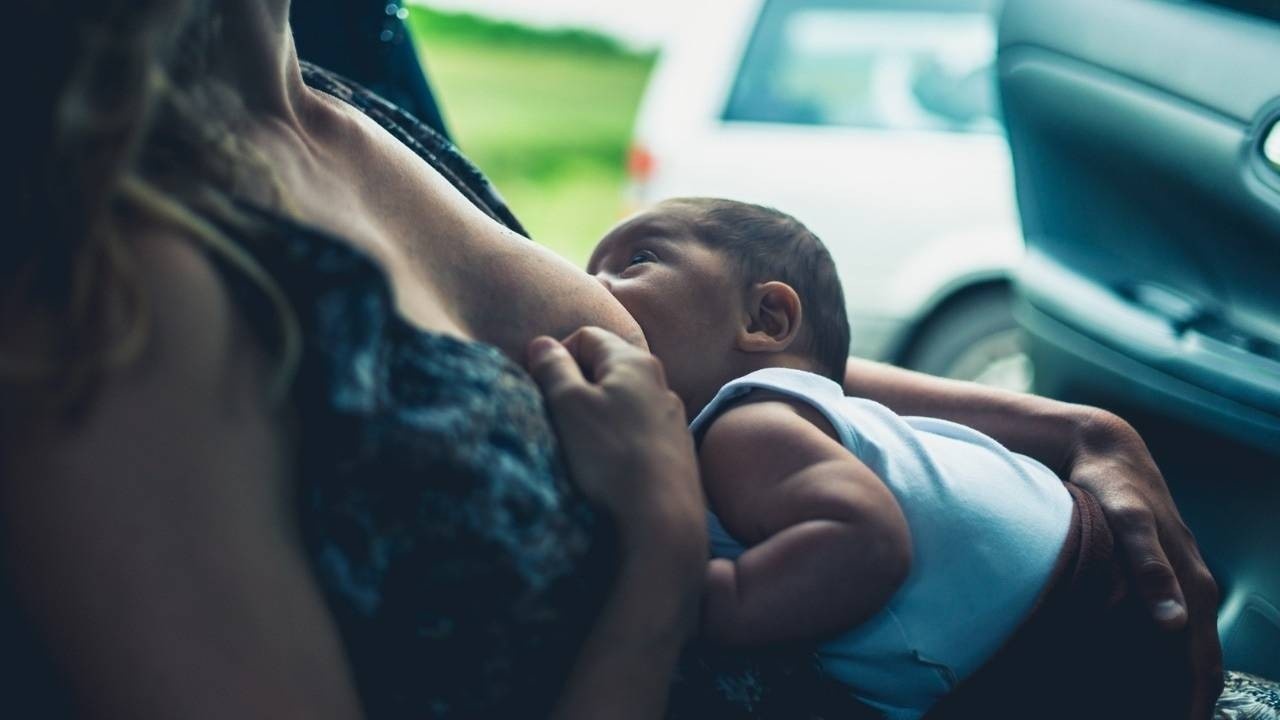Babies know how to breastfeed

Breastfeeding is instinctual but also requires skills that are learned. It can feel awkward at first but with time, patience and support it can be really satisfying and is immensely beneficial for babies and mothers.
Babies really love to be held and cuddled. It’s where they feel safest. Skin-to-skin contact also regulates their heart rate, temperature and breathing. We are biologically designed to want this. This cuddling helps parents too. It boosts oxytocin (the love hormone) which helps with bonding and milk production.
Healthy full-term babies will show hunger cues when they need to eat. They may start opening their mouth, rooting, bobbing their head and sticking their tongue out. Newborns have an innate ability to find and latch onto a breast. They also know when they are finished and can self-regulate feedings. Encouraging this instinct is a basis for biological nurturing. Watch the baby for cues (not the clock).
In some circumstances, the clock actually does need to be watched. A baby that has had a medicated birth, has health complications or congenital issues may be very sleepy. They may need to be stimulated to feed, be fed more frequently and perhaps supplemented as well.
What is the breast crawl?
During the first hour after birth, if undisturbed, newborns have instincts and biological processes that help them to self-attach to the breast.
Babies have a stepping reflex and use their senses to initiate a ‘breast crawl’ towards the mother’s breasts and nipples. They may use their hands to massage the breasts and bob their head around until they attach and suckle.
What is the rooting reflex?
Newborns have reflexes that help them breastfeed. A baby will naturally turn its’ head towards cheek stimulation. This can be used to encourage baby to root and look for the nipple. When baby is ready they will open their mouth and extend their tongue and latch.

Line drawing of Laid-Back position from Breastfeeding and Human Lactation 6th edition
What is Laid Back Breastfeeding?
The laid back position can be a very comfortable position for mother and baby. Many hours are spent breastfeeding so it’s important that it feels good. This natural way of feeding is called ‘biological nurturing’. It encourages mother and baby to use their instincts and intuition.
To get into this position… The mother can be supported to semi-recline in a laid back position. She can try this in bed or on a couch or chair with pillows at her back for support. The baby is on their belly on the mothers belly and chest (stomach-to-stomach).
Why is a laid-back position beneficial?
This position is great because gravity helps baby to get good attachment. Their chin can touch the breast and they can get a deep latch. Attaching to the breast is a full body experience for newborns.
Laid back or biological nurturing encourages the baby to use their innate ability to find the nipple, latch and transfer milk.
Try different positions until mother and baby find what suits them best. Parents are the experts on their baby and their newborn also has instincts and reflexes that help them to effectively breastfeed.
Do you want to feel more confident about birth?
Download the free natural birth checklist!
It has practical tips and natural suggestions for the three stages of labor, a packing list for birth, pictures of useful labour positions and helpful hints for partners.


